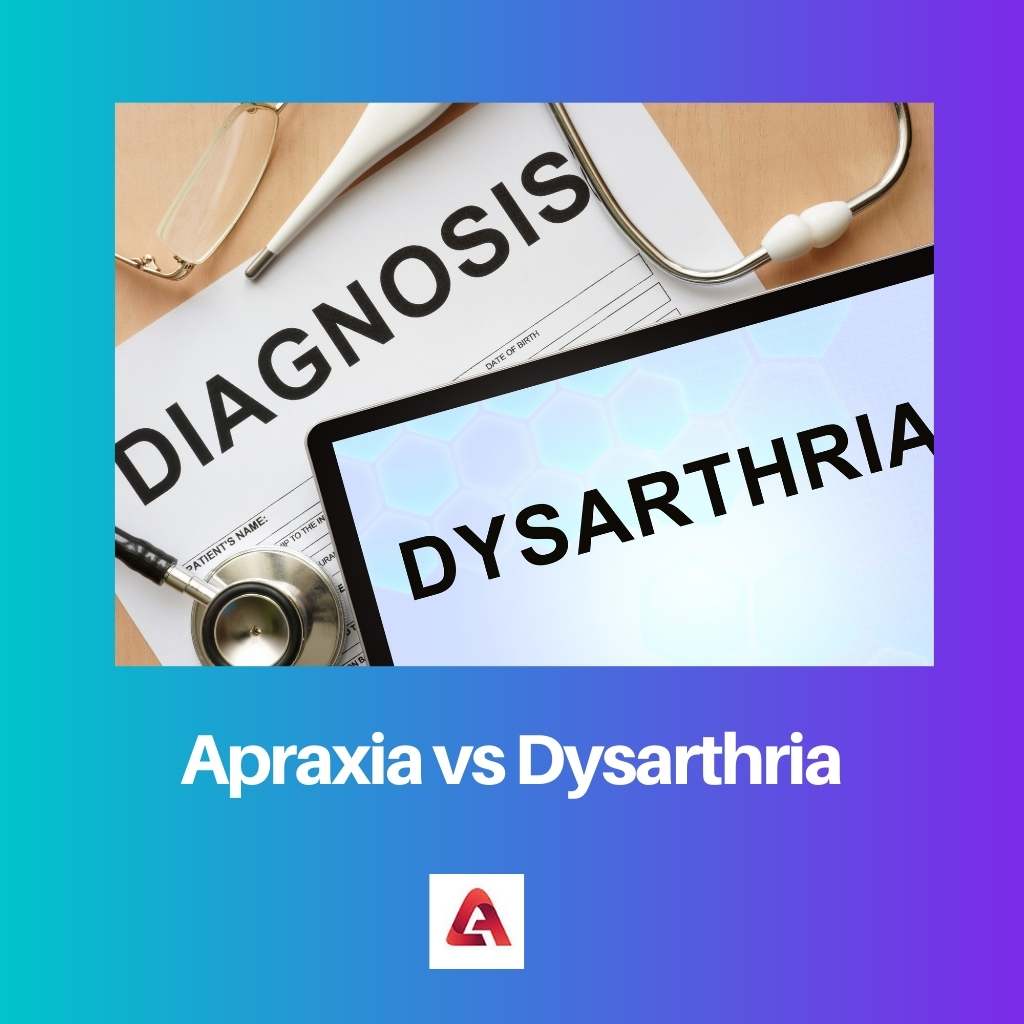Both apraxia and dysarthria are motor speech disorders that can either occur at birth or later in life due to nervous system disorders. According to the experts, both apraxia and dysarthria are treatable motor speech disorders. The causes of these two diseases are different, but in both cases, communication abilities need to be improved, hence the treatment is quite similar.
Key Takeaways
- Apraxia is a motor speech disorder affecting the planning and coordination of speech movements, while dysarthria results from weakened or damaged muscles used for speech.
- Dysarthria is characterized by slurred, slow, or uncoordinated speech, while apraxia presents as difficulty forming words, despite having clear speech muscle strength.
- Apraxia arises from brain damage, whereas dysarthria can result from various neurological conditions or physical injuries affecting speech muscles.
Apraxia vs Dysarthria
The difference between apraxia and dysarthria is that apraxia is a complication that arises due to a disorder of the brain and nervous system, whereas dysarthria occurs when coordination is absent among the muscles of a person and cannot produce speech. Patients with apraxia find it difficult to put words together while speaking, whereas dysarthria patients cannot speak clearly due to weak motor movements.

Apraxia is caused mainly due to a brain injury, head trauma, stroke, or even a brain tumour. Experts still don’t have a clear answer regarding what exactly causes apraxia in childhood, but the main reason can be improper signalling between the brain and the muscles used for speaking.
Patients with dysarthria find it difficult to speak loudly or in a rhythmic tone. They produce very monotonous and rapid speech, which is difficult to comprehend. It is difficult for dysarthria patients to move their tongue and facial muscles properly.
Comparison Table
| Parameters of Comparison | Apraxia | Dysarthria |
|---|---|---|
| Disorder | Apraxia is defined as a disorder of the brain and nervous system. | Dysarthria is defined as the disorder of muscles that are unable to coordinate and produce speech. |
| Symptoms | The main symptoms of apraxia are unable to put the syllables of a word in the appropriate order and trying to use non-verbal communication excessively. | The main symptoms of dysarthria are slurred and rapid speech and difficulty in moving the facial muscles. |
| Causes | The main causes of apraxia are brain tumours, head injuries, stroke, or neurodegenerative disease. | Some diseases that lead to the condition of dysarthria are Parkinson’s disease, Lyme disease, cerebral palsy, Huntington’s disease, etc. |
| Diagnosis | A speech-language pathologist interacts with the child in several ways and examines the mouth, tongue, and face for any structural problems. | Various image testings (MRI, CT scan), brain biopsy, and neuropsychological tests are carried out. |
| Treatment | Constant speech therapy, working with different rhythms and melodies and using multisensory approaches. | Speech therapy to adjust speech rate, strengthen muscles, and improve articulation. |
What is Apraxia?
Apraxia is a neurological disorder as the patients suffering from this disease have well-functioning muscles yet find it difficult to carry their normal speech. The milder form of apraxia is known as dyspraxia.
There are two types of apraxia, acquired apraxia and childhood apraxia. Acquired apraxia happens to people of all ages, and they lose the ability to speak or form proper words that they once possessed.
During apraxia, many noticeable symptoms show up. Some of them are unable to put syllables of a word in an appropriate order, unable to pronounce complex and long words, use a non-verbal form of communication, unable to pronounce consonants at the beginning and end of a word, etc.
What is Dysarthria?
Dysarthria is a speech-motor disorder that occurs if a person has weak facial muscles or they find it hard to control. In the case of dysarthria, speech therapy and medications help a lot in improving the condition.
Some of the common symptoms of the disease are slurred speech, speech at a very fast rate without any rhythm, inability to speak loudly, strained voice, facing difficulty in moving the tongue or any other facial muscles, etc.
There are several tests to diagnose dysarthria. Some of them are imaging tests (MRI and CT Scan), brain and nerve studies (EMG), blood and urine tests, brain biopsies, neuropsychological tests, etc. To cure dysarthria, constant speech therapy is extremely important.
Main Differences Between Apraxia and Dysarthria
- A speech-language pathologist interacts with a child to understand which kind of syllables or sounds the child is unable to produce. The doctor also checks the structure of facial muscles. In the case of dysarthria, MRI, CT Scan, brain biopsy, and neuropsychological tests are carried out.
- Constant speech therapy and using multisensory approaches are the most effective treatments for apraxia. In the case of dysarthria, therapy to strengthen the facial muscles, adjust speed rate, and improve articulation is effective.





